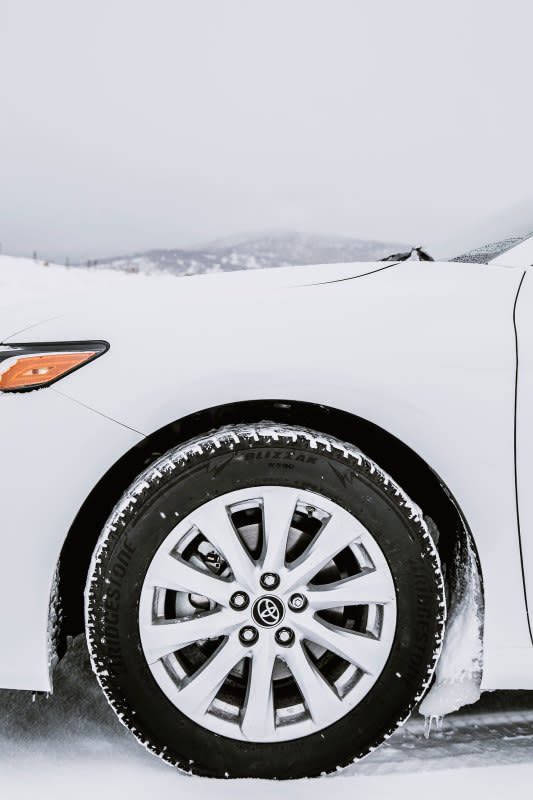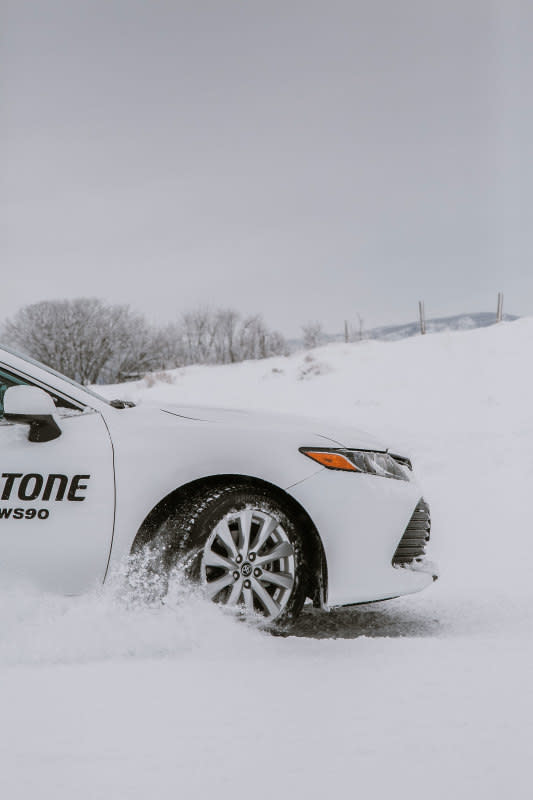How to Store Winter Snow Tires in the Offseason
Winter tires enhance winter driving performance and safety. While drivers in many parts of the United States benefit from seasonal tires designed to provide extra traction on snow and ice, some of those who need them the most get stuck on one barrier: storage space. If it's your first year using winter tires during the cold winter months or you're vying to upgrade from your "trusted" all-season tires, take a second to consider the best long-term storage options.
Where should I store my winter tires during the offseason?
Finding an appropriate place to store an extra set of four (or more!) tires year-round isn't always easy, but given the benefits of winter tires, many consumers look to find creative ways.
"The best storage condition for tires is a cool, dry environment out of direct sunlight or other UV sources with minimal variation in temperature and humidity levels. For example, a climate-controlled basement, garage or workshop," recommends Will Robbins, Director of Consumer Product Strategy, Bridgestone Americas. "[Whether it's] ventilated vs. non is less important, although isolating from sources of ozone (small engine, furnace, hot water heater, etc.) is recommended. Also, avoid storing your tires outside or in an area that's subject extreme temperatures. Even when covered, harmful environmental changes can affect tires stored outside."
If you have a favored mechanic, don't hesitate to ask if they can offer you safe storage for your out-of-use tires. In Canada, British Columbia and Quebec mandate drivers to use snow tires from December 1 to March 15, so in many respects, they've learned to navigate storage. Dealerships, auto shops, and tire stores alike offer space for proper tire storage, simplifying the matter for apartment dwellers and smaller homes. There are even climate-controlled storage units that specialize in storing snow tires.

Bridgestone
Should you hang unmounted tires, or lay them flat?
"There are a variety of ways that you can store your tires, including stacking and hanging," shares Robbins. "If you’re keeping the rims on, stack them on their sides vertically next to one another. If hanging, use tire hooks or tire racks. In each scenario, we recommend rotating their position every four weeks to help reduce pressure either on the other tires or the rim."
He adds, "Regardless of your preferred method, it’s best to cover each tire. Tire storage bags are available at a variety of local and online shops, which allows each tire to be wrapped in its opaque, well-sealed, airtight package. Large, heavy-duty garbage bags can work in a pinch, too. As you seal each tire bag, use a vacuum cleaner to remove as much air as possible."
How much do winter tires weigh?
(As in, is it going to be a hassle to lug them around?) "Tire weight scales based on physical size and/or dimension with ranges from approximately 20 pounds for small tires to approximately 70+ pounds for large, off-road tires," shares Robbins. "Wheel weights will also vary depending on size and/or material. Typical passenger wheels are 25-35 pounds. Depending on the many variables, that means a small passenger tire with the wheel typically weighs approximately 45-55 pounds."
Remember: Perform a Visual Check When Removing Winter Tires
"Before removing, it’s a good time to do a visual inspection for signs of uneven wear like cracks, bulges and tread wear on the tire grooves," reminds Robbins. "We also recommend cleaning dirty tires with a soft cloth, mild dish soap and water to remove road grime, dirt and brake dust. While this build-up of road debris may look harmless, it can be deceptively corrosive. Also, avoid gloss products or any type of dressing because it can actually break down the tire rubber tire compound and affect the tire’s longevity."

Bridgestone
FAQ
Do winter tires need to be rotated season-to-season?
Yes, and in fact, tire experts recommend labeling the tires to remember where each tire was worn year after year. "[Doing so allows] for proper rotation between seasons to optimize treadwear," explains Robbins. Tire rotation is an extremely important facet of tire upkeep and maintenance, and it also may be required to ensure your tires are covered under warranty."
He adds, "In addition to better performance and handling, tire rotation [every 5,000 miles] is essential for longer tread life. Because front and rear tires wear differently, regular tire rotations reduce uneven tread wear. Proper rotation also helps with improved fuel efficiency to ensure your tires are performing at their best, delivering solid traction and stability, and maximizing every tank of gas."
Do I need to buy my own rims?
It's helpful, but only necessary if you plan to install the tires yourself every winter. Robbins shares, "Having a dedicated set of winter tires on rims, along with basic garage tools, is a great way for a driver to store and install tires and wheels themselves, saving a trip to a tire shop. This is an additional upfront expense for the wheels, but it can save money over time by not needing to pay for a changeover at an auto shop every season."
